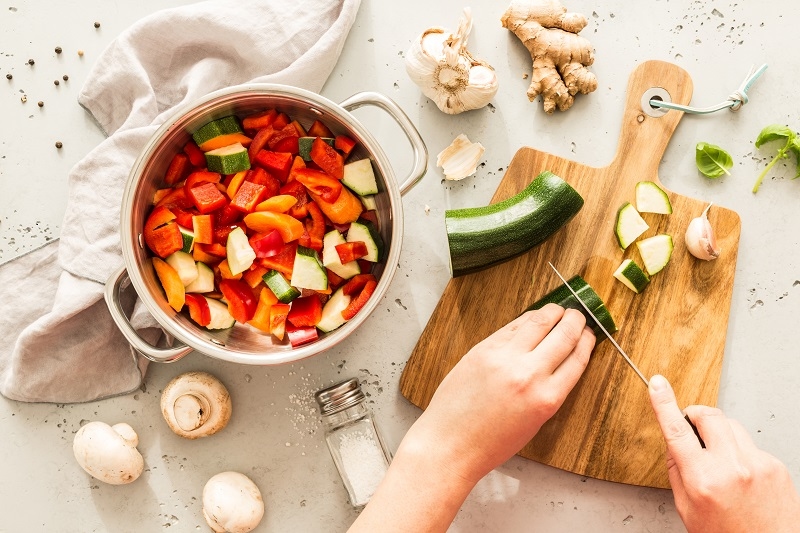
Picture this: A boxer steps into the ring, gloves laced tight, muscles primed, and energy buzzing like a live wire. But here’s the twist—their secret weapon isn’t a fancy supplement or a pre-fight steak. It’s a plant-based diet. Sounds wild? Maybe. But let’s get real for a sec—plant-powered athletes are crushing it these days. Take pro boxer David Haye, who swapped chicken breasts for chickpeas and credits his comeback to leafy greens and lentils. Or UFC champ Nate Diaz, who famously quipped, “I fight meatheads… on a veggie diet.”
If you’re rolling your eyes thinking, “Yeah, but where’s the protein?”—trust me, we’ve all been there. But here’s the thing: nailing your boxing performance on plants isn’t just possible—it’s a game-changer. Let’s break down how to fuel those knockout punches without a single animal product in sight.
Before we dive into meal plans and pre-fight smoothies, let’s clear the air. A plant-based diet isn’t about eating salads 24/7 or swearing off pizza forever (thank God). It’s about prioritizing whole, minimally processed foods from the ground. Think: fruits, veggies, grains, nuts, seeds, and legumes. Meat and dairy? They’re optional, not the main event.
Confused? Think of it like this: If your plate were a boxing match, plants would be the heavyweight champ taking up 80% of the space. The other 20%? That’s your flexibility zone—maybe a splash of almond milk in your coffee or that vegan protein powder you mix into post-workout oats.
Let’s cut to the chase. You’re not here for a lecture on saving the planet (though that’s a nice bonus). You want to know how plants will make you faster, stronger, and sharper in the ring. Science—and real-world bruisers—have your back:
But hey, don’t just take my word for it. Try it for two weeks. Notice how your mitt work feels crisper. How your breathing stays steady in round five. How you’re not hungry an hour after meals. Still skeptical? Let’s talk meal plans.

Creating a plant-based diet meal plan isn’t about deprivation—it’s about strategy. You need carbs for fuel, protein for muscle, and fats for stamina. Here’s how to nail it:
Roast a diced sweet potato (complex carbs = slow-burn energy), top with black beans (protein), avocado (healthy fats), and salsa. Add a dash of hot sauce if you’re feeling spicy. Why it works: This combo keeps blood sugar steady, so you’re not crashing mid-jump rope session.
Mix cooked lentils (18g protein per cup), quinoa, diced cucumber, cherry tomatoes, and a lemon-tahini dressing. Side of whole-grain pita. Pro tip: Meal prep this on Sunday—it’s fridge-friendly for three days.
Blend almond milk, frozen banana, spinach, peanut butter, and a scoop of vegan protein powder. Chug it 30 minutes before training.
Sauté tempeh (fermented soy = gut-friendly protein) with broccoli, bell peppers, and ginger. Serve over brown rice. Bonus: Add pineapple chunks for a sweet-and-savory kick.
Read More: Does a Punching Bag Build Muscle? Strength, Boxing, and More
Mix chia seeds, cocoa powder, and oat milk. Let it sit overnight. Top with raspberries. It’s like dessert, but with omega-3s for recovery.
Plant-Based Diet for Beginners: 3 Mistakes to Avoid
Starting a plant-based diet for beginners can feel like learning to jab with your weak hand—awkward at first, but worth it. Steer clear of these rookie errors:
Let’s address the elephant in the room. Yes, plants have protein—a lot. Here’s the punchline:
Combine these throughout the day, and you’ll easily hit 1.6g of protein per kg of bodyweight—the gold standard for athletes. Still worried? Whip up a post-workout shake with pea protein powder (30g per scoop) and almond butter.
Switching to a plant-based diet doesn’t mean you’ll morph into a kale-chomping robot overnight. Some days, you’ll crave vegan pizza. Others, you’ll devour a Buddha bowl like it’s your job. The key is progress, not perfection.
One last tip: Follow plant-based boxers on Instagram or TikTok for motivation. @veganboxerpro posts killer meal hacks, like date-sweetened energy balls that’ll make gel packs taste like cardboard.

Changing to a plant-based diet addresses how you fuel your whole training and recovery process, not only what's on your plate. Though food is the basis, timing, hydration, supplements, and other factors also greatly affect your boxing performance.
Though you can eat all the superfoods on Earth, your energy will run out mid-fight if your hydration is incorrect. Dehydration compromises endurance, attention, and muscular performance. Plant-based diets often have significant fiber, thus appropriate hydration is even more important to maintain digestion smoothness and avoid bloating before exercise.
Hydration advice for boxers who eat plants:
Sometimes even the most carefully thought out plant-based diet requires a small backup. Although entire meals should take front stage, several supplements guarantee best recovery and performance.
For plant-based athletes, essential vitamins include:
Especially following strenuous sparring sessions, magnesium helps muscles recover and lessens cramps.
It's when you eat, not only what you consume. Good meal timing will help you avoid ring slowness and maintain strong energy during fights.
Perfect dinner time for boxers made from plants:
Read More: The Culture of Combat Sports - Combat Rules and Regulations
So, there you have it—the ultimate playbook for fueling fists of fury with plants. Will it take some adjustment? Sure. But as any boxer knows, growth happens outside the comfort zone.
Try a plant-based diet meal plan for 30 days. Track your energy, recovery, and punching speed. Notice the difference? Then step into the ring, and let those plant-powered punches fly.
Who knows? You might just find that the best thing you ever did for your boxing wasn’t hiring a new coach…
It was firing the steak.
Got a favorite plant-based meal that fuels your workouts? Share it below—we’re all in this ring together.